 W
WAnnals of the Parish is an 1821 novel of Scottish country life by John Galt. Micah Balwhidder, considered to be the finest character created by Galt, reveals himself in the fictional first-person account to have human failings including conceit and vanity, as well as a keen interest in how the economy prospers. The book provides a humorous and realistic account of a typical parish minister of the late 18th and early 19th century, the way of life in rural Scotland, and the social changes of the Industrial Revolution.
 W
WThe Asloan Manuscript is an anthology of Scots prose and poetry dating to the early sixteenth century. It was compiled by the Edinburgh notary John Asloan.
 W
W"Auld Lang Syne" is a popular song, particularly in the English-speaking world. Traditionally it is sung to bid farewell to the old year at the stroke of midnight on New Year's Eve. By extension, it is also often heard at funerals, graduations, and as a farewell or ending to other occasions; for instance many branches of the Scouting movement use it to close jamborees and other functions.
 W
WThe Buke of the Howlat, often referred to simply as The Howlat, is a humorous 15th century Scots poem by Richard Holland.
 W
WThe Cotter's Saturday Night is a poem by Robert Burns that was first published in Poems, Chiefly in the Scottish Dialect in 1786.
 W
WA Drunk Man Looks at the Thistle is a long poem by Hugh MacDiarmid written in Scots and published in 1926. It is composed as a form of monologue with influences from stream of consciousness genres of writing. A poem of extremes, it ranges between comic and serious modes and examines a wide range of cultural, sexual, political, scientific, existential, metaphysical and cosmic themes, ultimately unified through one consistent central thread, the poet's affectively charged contemplation, looking askance at the condition of Scotland. It also includes extended and complex responses to figures from European and Russian literature, in particular Dostoevsky and Nietzsche, as well as referencing topical events and personalities of the mid-1920s such as Isadora Duncan or the UK General Strike of 1926. It is one of the major modernist literary works of the 20th century.
 W
WGet Up and Bar the Door is a medieval Scots ballad about a battle of wills between a husband and wife. It is Child ballad 275. According to Child, it was first published by David Herd.
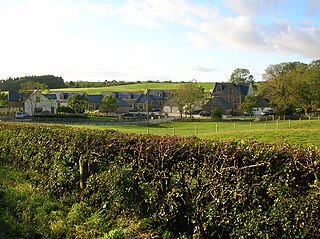 W
WHandsome Nell was the first song written by Robert Burns, often treated as a poem, that was first published in the last volume of James Johnson's Scots Musical Museum in 1803 (No.551) with an untitled tune. Burns recorded in holograph on page three of his first Commonplace Book that he wrote the song or Rhyme at the age of only fifteen whilst living at Mount Oliphant Farm, it is regarded as his earliest production, inspired by a farm servant aged fourteen, named either Nelly Kilpatrick or Nelly Blair. Some confusion exists as he also gave his age as 16 in his autobiographical letter to Dr. Moore; the autumn of 1774 is generally accepted.
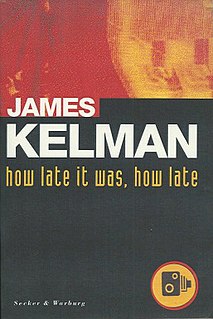 W
WHow late it was, how late is a 1994 stream-of-consciousness novel written by Scottish writer James Kelman. The Glasgow-centred work is written in a working-class Scottish dialect, and follows Sammy, a shoplifter and ex-convict.
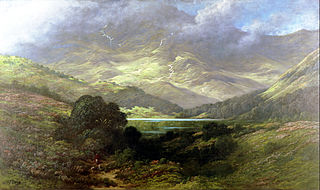 W
WHow The First Helandman of God Was Maid is an anonymous comic poem in Scots preserved in the Bannatyne Manuscript of the sixteenth century.
 W
W"A Man's a Man for A' That", also known as "Is There for Honest Poverty" or "For a' That and a' That", is a 1795 song by Robert Burns, written in Scots and English, famous for its expression of egalitarian ideas of society, which may be seen as expressing the ideas of republicanism that arose in the 18th century.
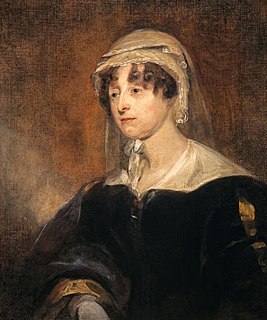 W
WThe Laird o' Cockpen is a song written by Carolina Oliphant, Lady Nairne (1766–1845), which she contributed anonymously to The Scottish Minstrel, a six-volume collection of traditional Scottish songs published from 1821 to 1824. Much of the Scottish poetry in Carolina's time was concerned with writing genteel verses for somewhat bawdier earlier songs, and The Laird o' Cockpen is no exception, being set to the music of "O when she cam' ben she bobbit".
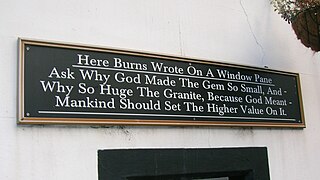 W
WRobert Burns came to know James Cunninghamme, Earl of Glencairn in Edinburgh in 1786 through a 'Letter of Introduction' provided by Dalrymple of Orangefield who was married to Lady Glencairn's sister. The Earl received the poet warmly in his house and introduced him to his friends. One of several gifts from the earl to the poet was a diamond point pen, stylus, or cutter which he used to write upon many windowpanes and glasses, scribing verse, his signature, epigrams, or other writings for posterity. Many of these diamond-point engravings survive, some however are contentious as regards either their authenticity, meaning, or both.
 W
WQuha Hes Gud Malt And Makis Ill Drynk is a brief, anonymous Scots poem of the sixteenth century which praises skillful brewers and curses unskillful ones. Throughout the poem, the brewers are assumed to be female. The poem is found in the Bannatyne Manuscript.
 W
WQuhy Sowld Nocht Allane Honorit Be is an anonymous allegorical poem of the fifteenth or sixteenth century written in Scots.
 W
WA Satire of the Three Estates, is a satirical morality play in Middle Scots, written by makar Sir David Lyndsay. The complete play was first performed outside in the playing field at Cupar, Fife in June 1552 during the Midsummer holiday, where the action took place under Castle Hill. It was subsequently performed in Edinburgh, also outdoors, in 1554. The full text was first printed in 1602 and extracts were copied into the Bannatyne Manuscript. The Satire is an attack on the Three Estates represented in the Parliament of Scotland – the clergy, lords and burgh representatives, symbolised by the characters Spiritualitie, Temporalitie and Merchant. The clergy come in for the strongest criticism. The work portrays the social tensions present at this pivotal moment in Scottish history.
 W
WThe Scots Musical Museum was an influential collection of traditional folk music of Scotland published in 1797. While it was not the first collection of Scottish folk songs and music, the six volumes with 100 songs in each collected many pieces, introduced new songs, and brought many of them into the classical music repertoire.
 W
WA Scots Quair is a trilogy by the Scottish writer Lewis Grassic Gibbon, describing the life of Chris Guthrie, a woman from the north-east of Scotland during the early 20th century.
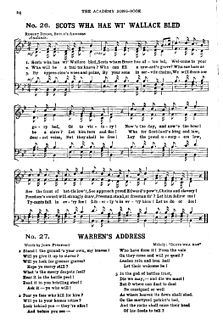 W
W"Scots Wha Hae" is a patriotic song of Scotland written using both words of the Scots language and English, which served for centuries as an unofficial national anthem of the country, but has lately been largely supplanted by "Scotland the Brave" and "Flower of Scotland".
 W
WAne Schort Treatise conteining some Reulis and Cautelis to be observit and eschewit in Scottis poesie (1584) is the full title of a work of non-fiction prose in Scots, also called The Essayes of a Prentise in the Divine Art of Poesie, written by the 19-year-old James VI of Scotland and first published in Edinburgh. Its original purpose was to describe and propose the ideal standard for poets writing in the Scottish tradition, a tradition which includes James' direct ancestor, James I (1394-1437).
 W
W"Sweet Afton" is a lyrical poem describing the Afton Water in Ayrshire, Scotland. It was written by Robert Burns in 1791 and set to music by Jonathan E. Spilman in 1837, under the title Flow gently, sweet Afton. This poem was originally published by Burns in the Scots Musical Museum as a song, still sung today as published.
 W
W"The Taill of the Uponlandis Mous and the Burges Mous", also known as "The Twa Mice," is a Middle Scots adaptation of Aesop's Fable The Town Mouse and the Country Mouse by the Scottish poet Robert Henryson. Written around the 1480s, it is the second poem in Henryson's collection called The Morall Fabillis of Esope the Phrygian.
 W
W"Thrawn Janet" is a short story, written in Scots, by the Scottish author Robert Louis Stevenson. He wrote the story in the summer of 1881 while he stayed at the rented Kinnaird Cottage in Kinnaird, a hamlet near Pitlochry, with his parents and wife. When he read the story to his wife Fanny, she said of it that it "sent a cauld grue [shudder] along my bones" and "fair frightened" Stevenson himself. It was first published in the October 1881 issue of the Cornhill Magazine. It is a dark tale of satanic possession.
 W
W"To a Mountain Daisy", On Turning one Down, With The Plough, in April 1786 is a Scots poem written by Robert Burns in 1786. It was included in the Kilmarnock volume of Burns's poems, published in that year.
 W
WTrainspotting is the first novel by Scottish writer Irvine Welsh, first published in 1993. It takes the form of a collection of short stories, written in either Scots, Scottish English or British English, revolving around various residents of Leith, Edinburgh who either use heroin, are friends of the core group of heroin users, or engage in destructive activities that are effectively addictions. The novel is set in the late 1980s and has been described by The Sunday Times as "the voice of punk, grown up, grown wiser and grown eloquent".
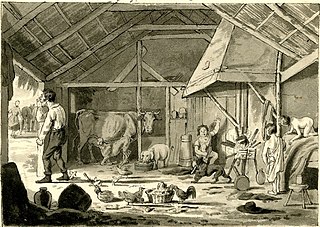 W
W"The Wife of Auchtermuchty" is a Scots poem of the fifteenth or sixteenth centuries.